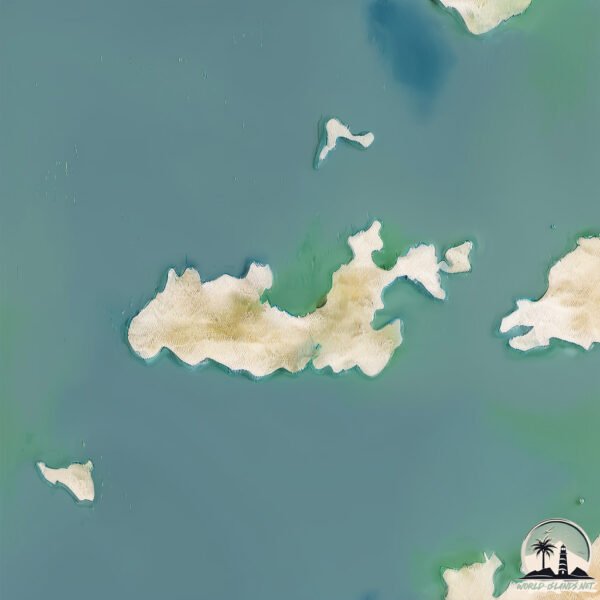Welcome to Enderby , a Dry island in the Indian Ocean, part of the majestic Indian Ocean. This guide offers a comprehensive overview of what makes Enderby unique – from its geography and climate to its population, infrastructure, and beyond. Dive into the details:
Geography and size of Enderby
Size: 33.2 km²Coastline: 52 kmOcean: Indian OceanSea: Indian OceanContinent: Oceania
Enderby is a Medium Island spanning 33 km² with a coastline of 52 km.
Archipel: –
Tectonic Plate: Australia – A major tectonic plate covering Australia, New Zealand, and parts of the Indian and Pacific Oceans, known for its relative stability and occasional seismic activity.
The geographic heart of the island is pinpointed at these coordinates:
Climate and weather of Enderby
Climate Zone: DryClimate Details: Hot Deserts ClimateTemperature: Hot
Climate Characteristics: Dominated by extremely hot temperatures, this climate is marked by minimal rainfall and barren landscapes. Nights often experience drastic temperature drops.
Topography and nature of Enderby
Timezone: UTC+08:00Timezone places: Australia/PerthMax. Elevation: 69 m Mean Elevation: 18 mVegetation: ShrublandTree Coverage: 44%
The mean elevation is 18 m. The highest elevation on the island reaches approximately 69 meters above sea level. The island is characterized by Plains: Flat, low-lying lands characterized by a maximum elevation of up to 200 meters. On islands, plains are typically coastal lowlands or central flat areas.
Dominating Vegetation: Shrubland
Vegetation: 8 vegetation zones – Very Highly Diverse Island
Infrastructure and Travelling to Enderby
Does the island have a public airport? no .
Does the island have a major port? no .
The mean population of Enderby is 0 per km². Enderby is Uninhabited. The island belongs to Australia .
Continuing your journey, West Lewis is the next notable island, situated merely km away.
The Galápagos of the Southern Ocean - Part II: Enderby Island
The second episode in a multi-part documentary on my travels to the sub-Antarctic islands of New Zealand and Australia.
The Galápagos of the Southern Ocean - Part II: Enderby Island
The second episode in a multi-part documentary on my travels to the ...
The second episode in a multi-part documentary on my travels to the sub-Antarctic islands of New Zealand and Australia.
Enderby Island, New Zealand
Enderby Island is part of New Zealand's uninhabited Auckland Islands ...
Enderby Island is part of New Zealand's uninhabited Auckland Islands archipelago, south of mainland New Zealand. It is situated ...
Enderby Island, Sub Antarctic Islands - On Location with Richard Young
I'm just here on Enderby Island and photographing these amazing mega ...
I'm just here on Enderby Island and photographing these amazing mega herbs, and we've got this lovely view out across this bay.
Australia is classified as Developed region: nonG7: Developed economies outside of the Group of Seven, characterized by high income and advanced economic structures. The level of income is High income: OECD.
News – Latest Updates and Headlines from Enderby
Stay informed with the most recent news and important headlines from Enderby. Here’s a roundup of the latest developments.
Loading...
Please note: The data used here has been primarily extracted from satellite readings. Deviations from exact values may occur, particularly regarding the height of elevations and population density. Land area and coastline measurements refer to average values at mean high tide.

